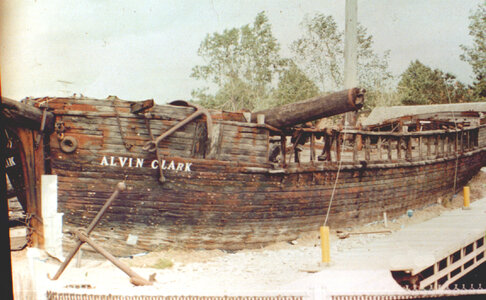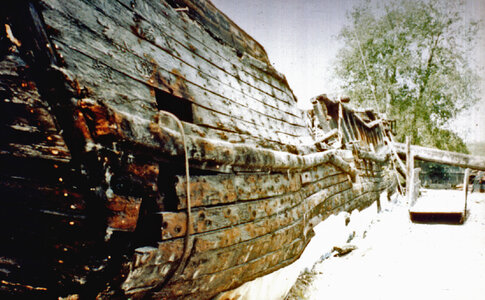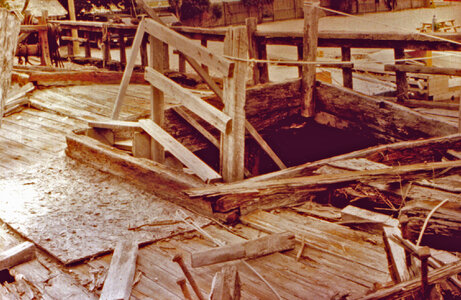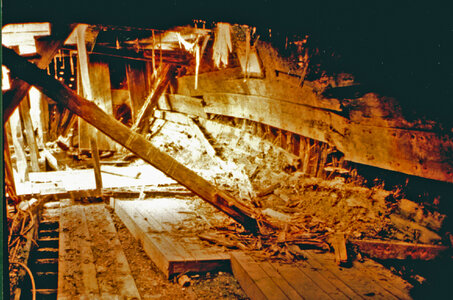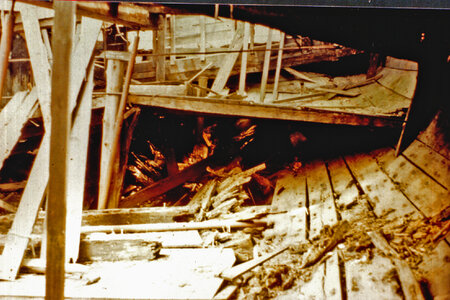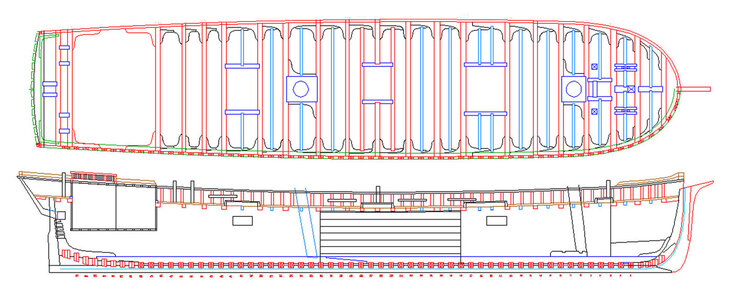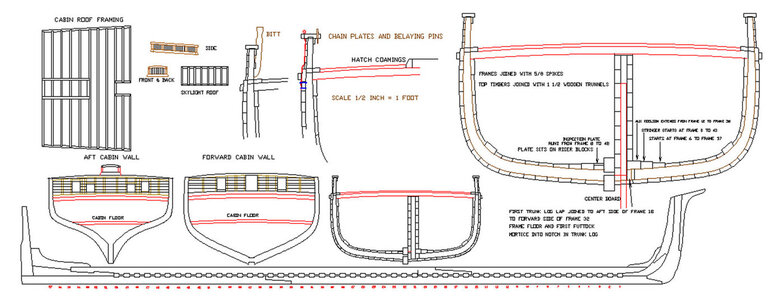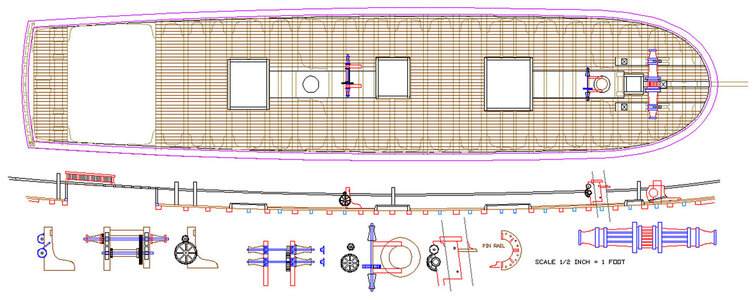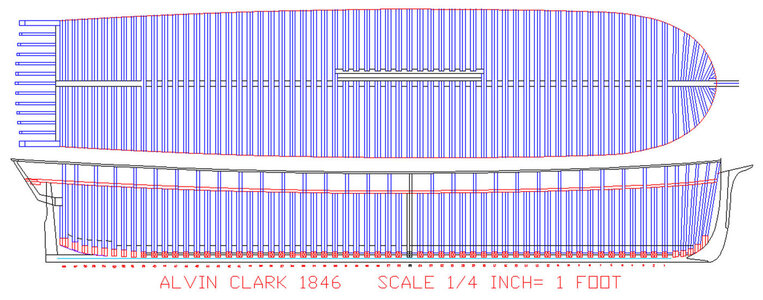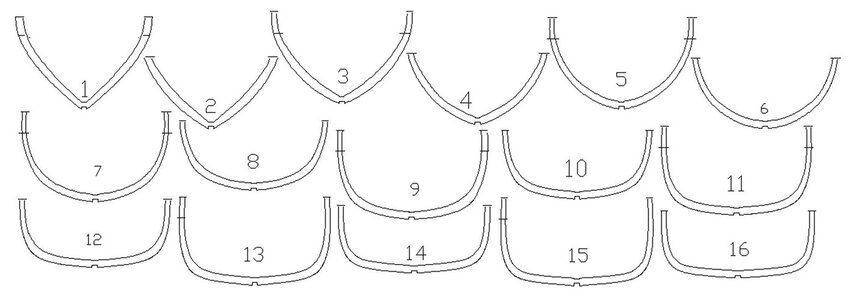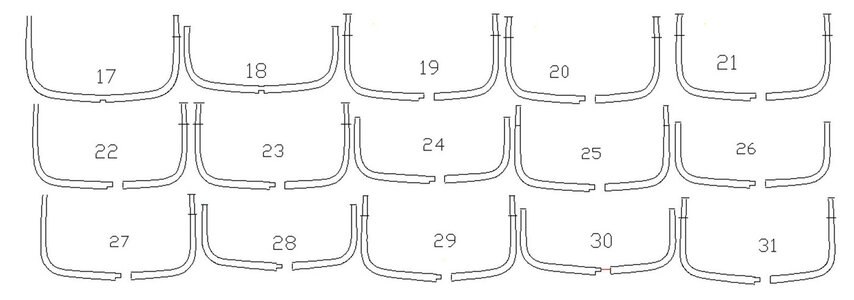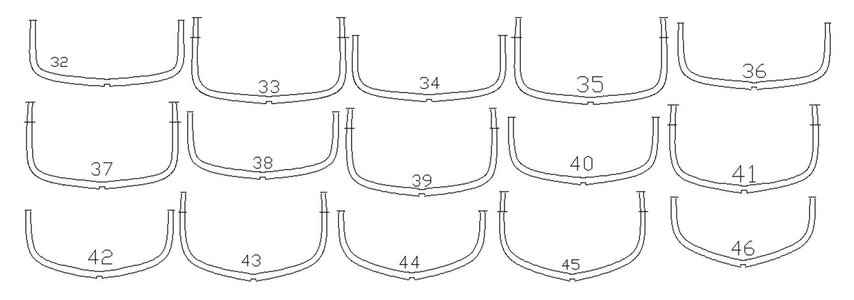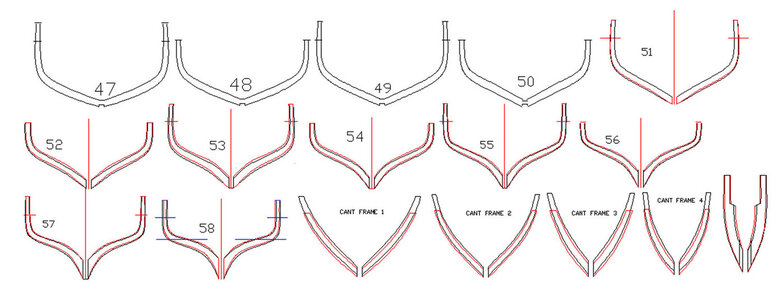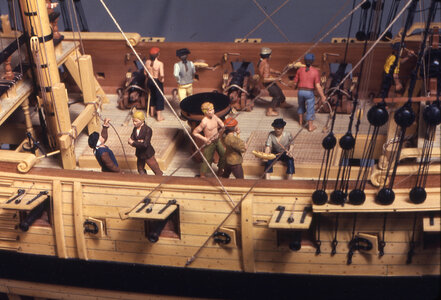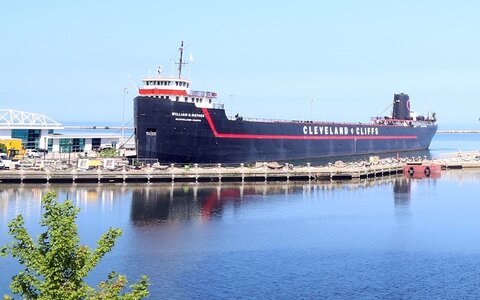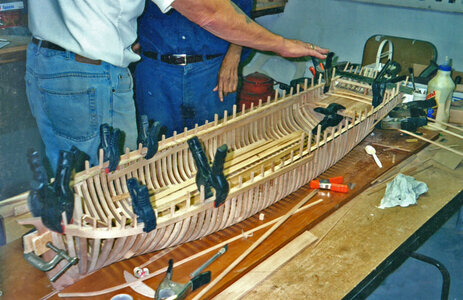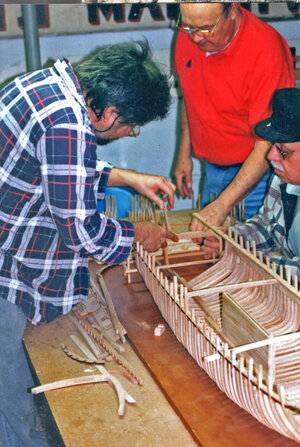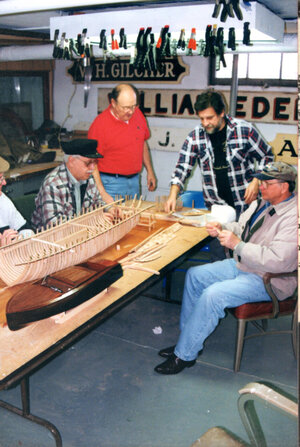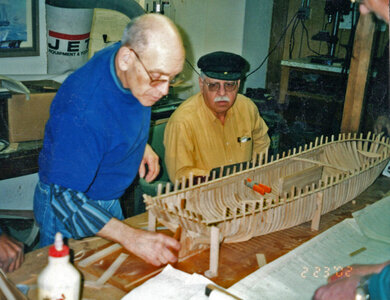going through my archives i found this
in the last days the Alvin Clark was a pirate ship
Her recovery was heralded by Howard I. Chapelle, historian of the Smithsonian Institute at Washington, D.C.
“This is a true treasure of the Great Lakes,” he wrote to Hoffman shortly after the ship was raised. “Your recovery of the schooner is of far greater importance than a few gold coins and a hull fragment from some supposed ‘treasure ship.’ In your find we will now be able to put together, in great part, the real work-a-day craft of the past.”
. The Alvin clark's history was pieces together by using logbooks, enrollment papers, newspaper accounts and harbor master and business records. The brigantine was built at the Bates and Davis shipyard in Trenton Michigan in 1846 for the Detroit businessman, fisherman, and ship builder John Clark, the ship was named after his son Alvin Clark. The Clark was a relatively large vessel designed as a Great Lakes cargo vessel measuring 105 feet in length 25 foot beam and a displacement of 220 tons. Very little information was found for the first five years, she never apperaed in harbor master records or any journal records. This is actually logical as the ship was owned by John Clark a successful commercial fisherman out of Detroit so the ship sailed privately for Clarks business and business associates carrying fish to the north and salt on the return trip. In 1850 the Alvin Clark was sold as a cargo vessel to G.W. Bissell and in 1851 she appeared in harbor records all over the upper Great Lakes. Records indicate the Clark carried huge cargos of coal, grain, salt and lumber, journal records of Bissell and harbor records show the Clark continued to haul cargo until she was sold in 1856 to William Higgie of Racine Wisconsin. From this point, official records of the Alvin Clark are almost nonexistent. Activities of the Alvin Clark can be traced because she made quite a reputation for herself on Lake Michigan as a pirate ship. Information is quite sketchy, but a big business had grown around the lumbering of timber from government land without payment then sold in ports like Chicago without question and at a hight profit. There are numerous references to the Higgie family's involvement in the transporting of contraband cargo of Federal timber. In Grand Haven it is reoprted Francis Higgie captain of the Alvin Clark was arrested and jailed on charges of untaxed lumber. His crew broke him out of jail, restole a cargo of confiscated lumber and excaped to Chicago where it was sold. Higgie was again arrested in Manistee where he bribed his way off a jail ship and ecaped. The priate lumber trade went unchecked until 1877 and the Alvin Clark was in the thick of it until her sinking in 1864.
Finally from a Detriot newspaper article titled
"Unsuccessful Wrecking Expedition"
The tug Sara E. Bryant, which left Buffalo some three weeks since to go to the relief of the schooner Alvin Clark capsized in Green Bay, returned from that locality on Sunday evening as far as this port of Detriot and proceeded on to Buffalo yesterday morning. The work of raising the Alvin Clark was not accomplished and she lies in 20 fathoms of water. Since her disaster she has been sold to other parties who contemplate getting her up at the earliest possible opportunity.
The opertunity did not come until 105 years after the sinking when the Alvin Clark was raised by Frank
In 1967 Frank Hoffmann was quoted saying " I began a many dimensional journey which has taken me through time, space and the hidden corners of my own thoughts. I traveled aboard the Alvin Clark, beginning my odyssey when she was still a mystery wreck at the bottom of Green Bay. There were many reasons why the ship could not be raised. There was no equipment, no experience, no money and no professional help. The work on a ship 110 feet down was sheer folly." But in spite of all the hardships the Alvin Clark was raised intact in July of 1969. Frank Hoffman a sport diver and owner of a bar and resort motel at Egg Harbor, got a call from a commercial fisherman to help free a trawling net snagged on something below the surface. Frank and a close friend boarded the vessel Dellie W. and made the 16 mile trip to the tangled net. From the surface they could not move the net so before leaving they made several sonar runs over the area to determine what the net was tangled on. From the sonar readings they knew the net was entangled on a sunken ship. Once the job of freeing the net and lines Hoffmann and fellow dives began to explore the shipwreck and make plans to raise the ship. The dive team worked weekends and vacations pumping silt and mud from the hull, Frank closed his motel to the public to house and feed the divers and their families figuring the cheaper he can make the trip for the divers the more often they can come to work on the wreck. At this point Frank was slowly going broke and took out a second mortgage to pay the divers and buy equipment. A break came when Harold Derusha of Marinette Marine corp. offered the use of a 60 foot military landing craft to mount an old 5 inch army surplus pump Hoffmann purchased from the village of Egg Harbor. Pumping of silt from the hull continues through out the summer and when the hull was finally cleared it was decided to use cables strung under the hull to create a sling to lift the ship. More money was borrowed to pay the crew and purchase the cables. fund raising efforts were done but no money was coming in the stress began to show in Frank and his wife Ellie as they tried to keep things going. Cables were in place and the Alvin Clark was ready to be lifted from the bottom of Green Bay, work of the divers was now done and these amateur dives completed 3,000 dives in murky water where they could see no more than 3 to 5 feet in front of their masks, when silt was stirred up they worked in total darkness. By the time of the lift the crew worked on a promise Hoffmann would raise money to pay salaries. Hundreds of on lookers and news crews boated out to the site to watch the lift. It took 100 turns of the four hand-cranked winches to lift the wreck five inches. With the crew exhausted on looker began to tie up to the barge and come aboard to continue the cranking of the winches.
The Alvin Clark was put on display with a small museum of artifacts as a tourist attraction but the money coming in was not sufficient to maintain the rapid deterioration of the vessel. Within a few years the pond she floated in was drained as the ship could no longer stay afloat. With no financial assistance to help preserve the ship, Frank Hoffmann's wife left him, his bar and motel gone, broke and frustrated from trying everything he could to save the ship he set out one night to burn the Alvin Clark to the ground. After several failed attempts to sell the Alvin Clark the property along with the ship was finally sold to Diversified Investment Group. The property was leased to Don Gillette who planned on turning the property into a marina and profits from the venture would be used to restore the Alvin Clark. As fate would have it the marina was not as profitable as originally thought and it lost its lease to Diversified Investment Group. By this time the hull was falling faster and faster into disrepair and Diversified Investment Group had no interest in sinking money into the Alvin Clark. Pressure on the investment group by the city to remove the collapsing hull prompted the land owners to allow a group to salvage whatever they could and what was left was trucked to a landfill.
The Alvin Clark was lost in 1864 and found in 1967 and her final fate lost in 1994.





